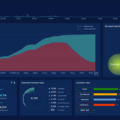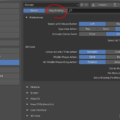If you’re looking for a comprehensive monitoring solution, two names that come to mind are Splunk and Datadog. Both offer powerful features, but it’s important to understand their differences before deciding which is right for your organization.
Splunk has been around since 2003 and is one of the most popular solutions in the market. It offers an extensive suite of data analytics capabilities, including log management, security analytics, and predictive intelligence. Splunk can also be used as a business intelligence platform to help you make sense of your data.
Datadog was founded in 2010 and has quickly become one of the most trusted monitoring solutions in the industry. It offers a single unified platform for observing your infrastructure, applications, network flows, security threats, user experience (UX), and much more. With its comprehensive feature set, Datadog allows you to easily navigate between metrics, traces, and logs for full visibility into your system.
Both Splunk and Datadog offer an impressive range of features that can help you monitor your systems in real time. However, when it comes down to it they each have their own unique strengths and weaknesses.
When it comes to breadth of management, Splunk wins hands down. Its expansive feature set makes it ideal for organizations that need an all-in-one solution with plenty of options for customizing their monitoring setup. However, while Splunk may have the edge on the breadth of management Datadog comes out ahead on depth – at least across a limited feature set – offering better drill down and general management capabilities than its competitor within APM (Application Performance Monitoring) and cloud services specifically. Furthermore, Datadog is better at managing itself as well making it easier to use overall than Splunk when dealing with complex setups or larger systems.
both solutions have a lot to offer any organization looking for robust monitoring capabilities but depending on what kind of monitoring you require either one may be more suitable than the other so be sure to do your research before making a final decision!

Comparing Datadog and Splunk
When it comes to comparing Datadog and Splunk, there is no clear-cut answer as to which one is better. Each of them has its own unique strengths and weaknesses that make it suitable for different use cases.
In terms of breadth of management capabilities, Splunk is the clear winner as it offers a comprehensive suite of solutions for monitoring, search and analytics, security, compliance, and more. On the other hand, Datadog offers superior depth for certain features such as APM (Application Performance Monitoring) and cloud services. It provides deeper drill-downs into metrics and allows for greater granular control over your environment. Additionally, Datadog also offers better self-management functionality than Splunk.
Ultimately, the choice between these two solutions depends on your specific needs and requirements. If you’re looking for a wide range of monitoring and analytics options, then Splunk might be the better choice. However, if you want to go into greater detail with APM or cloud services then you may find that Datadog is a better fit.
The Benefits of Using Datadog
Datadog is a special platform for monitoring and analyzing your entire IT infrastructure. It offers a single unified platform to observe your environment and get full visibility into all of the metrics, traces, and logs that are important to you. With Datadog, you can gain insights into the performance of applications, networks, security threats, user experience, and more. Its intuitive interface makes it easy to navigate between different views to quickly identify issues and ensure maximum uptime. Plus, Datadog’s advanced analytics capabilities enable you to gain deeper insights into your data so you can make decisions based on real-time information.
Does Amazon Utilize Datadog?
No, Amazon does not use Datadog. Although Datadog is an AWS Advanced Technology Partner and has achieved several AWS competencies, Amazon does not use Datadog for its own internal operations. Datadog is a cloud-based monitoring and analytics platform that allows customers to track their cloud infrastructure, applications, and services. It provides customers with real-time insights into their environment so they can make decisions faster and improve their digital experience. Customers can also use Datadog to monitor their AWS resources in the same way they would monitor on-premises infrastructure.
Does Amazon Utilize Splunk?
Yes, Amazon does use Splunk. AWS and Splunk have partnered to provide a cloud-based, analytics-driven security information and event management (SIEM) solution. This comprehensive solution enables customers to detect and respond to ransomware and other security issues in real-time. It also provides security teams with the ability to monitor their AWS environment for suspicious activity, identify malicious actors, and create automated responses to threats. Additionally, customers can leverage Splunk’s machine learning capabilities to quickly analyze large volumes of data for faster threat identification. Together, these features enable customers to stay ahead of the latest threats while ensuring the security of their systems.
Disadvantages of Using Splunk
Splunk is a powerful tool for analyzing large data sets, but it is not without its limitations. One of the major drawbacks of using Splunk is its high cost, particularly for very large data volumes. Additionally, optimizing searches for speed can be difficult to implement in Splunk, resulting in slow performance and potentially unreliable results. Another disadvantage is that there is a great deal of competition from other data analysis tools on the market, which may provide better value for money. Finally, users may find it hard to troubleshoot problems due to the complexity of the system and the lack of user-friendly diagnostics tools.
Comparing Alternatives to Datadog
When it comes to monitoring and logging tools, Datadog is an industry leader. However, that doesn’t mean it is the only option available. Many businesses have found success with other popular alternatives and competitors such as New Relic, Splunk, Prometheus, Grafana, and AppDynamics.
New Relic is an all-in-one platform for performance monitoring and analytics that allows users to monitor application performance in real-time. It also features advanced features such as deep dive analytics and error tracking.
Splunk offers a comprehensive suite of tools for log analysis and operational intelligence. It allows users to aggregate data from multiple sources and quickly identify patterns or anomalies in the data.
Prometheus is an open-source monitoring system designed specifically for storing time series data in a reliable manner. It allows users to set up custom alerts based on metrics or events and provides detailed insight into various aspects of their infrastructure’s performance.
Grafana is a visual analytics platform used to quickly create dashboards from various sources of data. With its powerful query language, users can easily create customized visualizations of their data sets to gain valuable insights about their systems’ performance over time.
Finally, AppDynamics offers an end-to-end solution for application performance management (APM). It helps customers analyze the behavior of their applications in real-time while providing insights into potential issues or opportunities for improvement.
Ultimately, choosing the right monitoring tool depends on your specific needs and requirements – there may not be one single answer that fits all use cases. However, each of these solutions has proven itself as a viable alternative to Datadog with its own unique advantages that could be beneficial depending on the context of your situation.
The Future of Datadog
The future of Datadog looks very promising. As the IT Observability industry continues to grow at a rapid CAGR of 19.9%, Datadog is well-positioned to take advantage and become a market leader. With the industry estimated to reach $53 billion by 2025 and over $1.7 trillion by 2029, Datadog stands to benefit significantly from this growth trend.
Datadog provides an innovative platform for monitoring and optimizing the performance, availability, and security of cloud applications and infrastructure. It helps businesses gain visibility into their systems with real-time data and analytics, enabling them to identify potential problems before they cause issues. With its comprehensive suite of solutions, it allows customers to improve their digital experiences by quickly resolving issues and optimizing performance across their entire stack.
As more businesses move towards cloud-based services, Datadog is well-positioned to meet the increasing demand for IT Observability solutions. With its deep insights into customers’ operations and its advanced technology platform, it can provide unparalleled service that will help businesses stay ahead of the competition. Additionally, its focus on customer success has earned it an impressive portfolio of enterprise clients in industries such as finance, healthcare, retail, media & entertainment, and many more.
Given its strong position in the market today and its potential for growth in the future, Datadog is primed for success in the coming years. Its comprehensive platform provides organizations with invaluable insight into their operations that can ultimately lead to improved performance across their entire stack – allowing them to remain competitive in an increasingly digital world.
Disadvantages of Using Datadog
The primary disadvantage of Datadog is the costly log analytics workflow. The process of ingesting, indexing, and retaining logs is complex and can be expensive for users who need to manage large volumes of data. Additionally, the scalability of Datadog can be a limitation, as it may not be able to handle a large influx of log data. Finally, Datadog lacks more advanced features, such as an integrated alerting system or deep insights into application performance.
The Benefits of Using Datadog
People like Datadog because of its comprehensive range of features, from performance monitoring to application tracking. With the ability to monitor multiple systems and applications from a single pane of glass, Datadog makes it easy to track performance and identify potential issues quickly. It also integrates with many popular third-party tools, such as Slack and PagerDuty, so users can receive actionable alerts when something needs attention. Additionally, Datadog’s user-friendly interface and detailed reporting capabilities make it simple to interpret data and troubleshoot problems. Finally, the platform’s responsive customer support team helps users optimize their setup and get the most out of the service.
Conclusion
In conclusion, when it comes to choosing a monitoring and analytics platform, both Splunk and Datadog offer many features and benefits. Splunk is a well-established tool with a wide range of features for managing large amounts of data, while Datadog provides more in-depth management capabilities for specific areas such as APM and cloud services. Ultimately, the choice between the two will depend on what your needs are and which features are most important to you. While Splunk may be the better option for an enterprise-level organization with a large amount of data to manage, Datadog could be the better choice for smaller organizations that need more detailed analysis.








